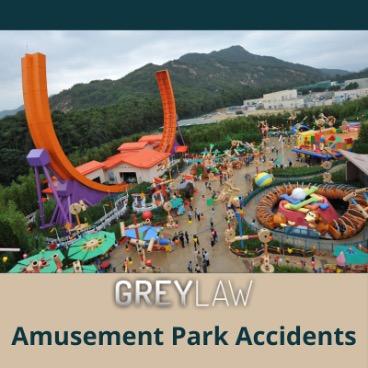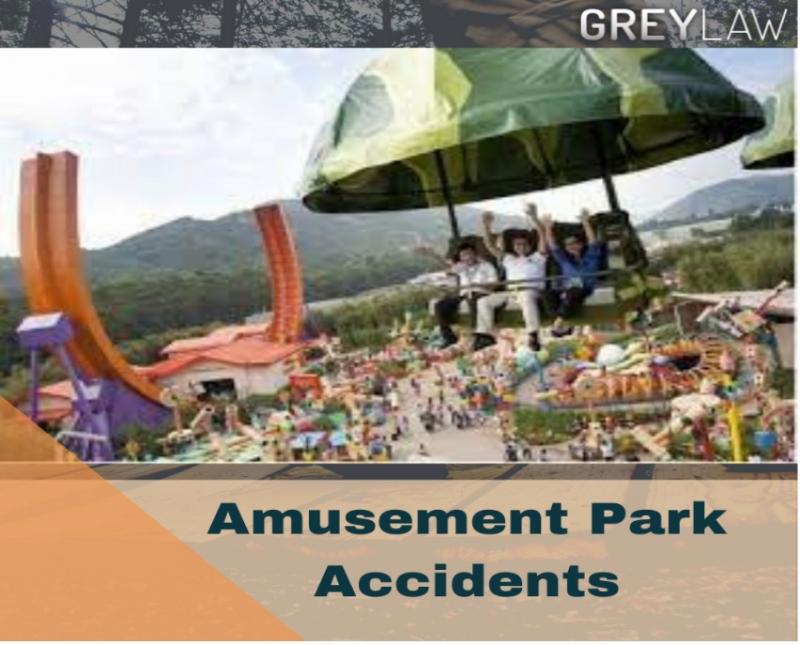List of Some Horrifying Amusement Park Accidents
Amusement parks are a popular attraction. Roller coasters, bumper cars, Ferris wheels, water slides, and various spinning, twirling, and flying attractions are popular with children, teenagers, and adults. Amusement park injuries are unfortunately common. Bumps and bruises to significant Brain Injuries, and fractured bones are among the ailments sustained by visitors. Amusement park injuries can lead to death in some situations.
Seven Common Amusement Park Injuries
While riding amusement park attractions, you might experience many of the same injuries you might sustain in a road accident or other personal injury accident. Unfortunately, your body is frequently tossed around in the same manner as a person's body is thrown around in a car accident. The following are some of the most common amusement park injuries:
- Fractures and broken bones
- Concussions and traumatic brain injuries are among the most severe brain and head injuries.
- Neck ailments such as whiplash
- Injury to the back and spinal cord
- Lacerations, bruises, and scrapes are all common injuries.
- Accidents involving drowning on water rides
- Ligaments, tendons, and muscles can all be damaged in soft tissue injuries.
Individuals who experience injuries at the amusement park should seek medical assistance as soon as possible.

What Causes Injuries at Amusement Parks?
Several different circumstances can cause an amusement park injury. Injuries in amusement parks are typical for a variety of reasons, including:
- Failure to keep rides in good working order and conduct proper inspections.
- Amusement park rides that are broken or unsafe.
- Slippery surfaces, tripping hazards, and other hazardous situations can contribute to slip and fall accidents.
- For lifts, there is a lack of trained monitoring.
- Inadequate ride operator training.
- Defective parts or materials, as well as mechanical breakdowns.
- Passenger misbehavior and irresponsible behavior.
- The ride's intrinsic hazard, such as a roller coaster, whips the rider around in multiple directions at high speeds.
The most common grounds of action used to prove responsibility and blame for an Amusement Park Accident are product liability, premises liability, and negligence. Visitors of the amusement park must show that the defendant's activities were a primary and proximate cause of their injuries in each case.
Not all amusement park damages give beginning to a valid legal claim against the park's proprietor, operator, or another party. The rider has some responsibility for taking the risk of riding a dangerous ride voluntarily. On the other hand, the defendant may be accountable for the person's losses if the defendant breached the duty of care it owes to individuals or was otherwise guilty of wrongdoing.

Damages Paid for Injuries at Amusement Parks
If the defendant is found to be at fault for the plaintiff's injuries, the park could be held accountable for:
- Medical attention is required.
- Loss of earnings
- Suffering and physical pain
- Permanent disabilities
- Scarring and deformity are common side effects of surgery.
- Suffering on the mental and emotional levels
- Additional out-of-pocket expenses
Several variables determine a person's compensation for an amusement park injury claim. A personal injury claim's worth is influenced by various elements, including the type of injury, the severity of the damage, and the number of financial losses.
Amusement Parks and Attractions, the chances of dying on a roller coaster are approximately one in 750 million. When injuries do occur, though, they can be life-threatening and catastrophic. Accidents, while suspended in mid-air, are incredibly terrifying.
Conclusion: While most people expect a day at the theme park to be a fun, exciting outing with friends and family, they know that roller coasters and other rides carry some risk, albeit modest, risk. Each year, over 30,000 people are injured at amusement parks. However, fatal incidents are highly unusual, with only a handful occurring in the recent decade.
More to Read:
Previous Posts:










